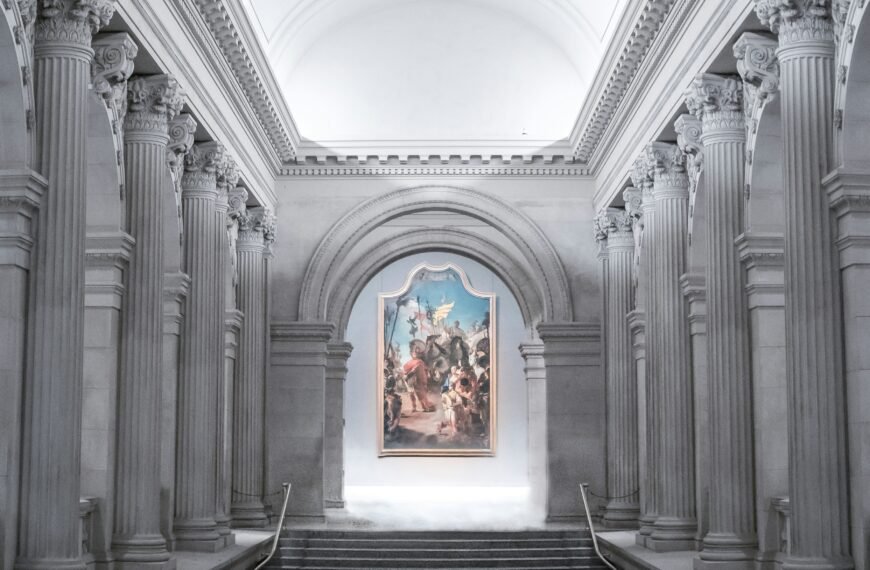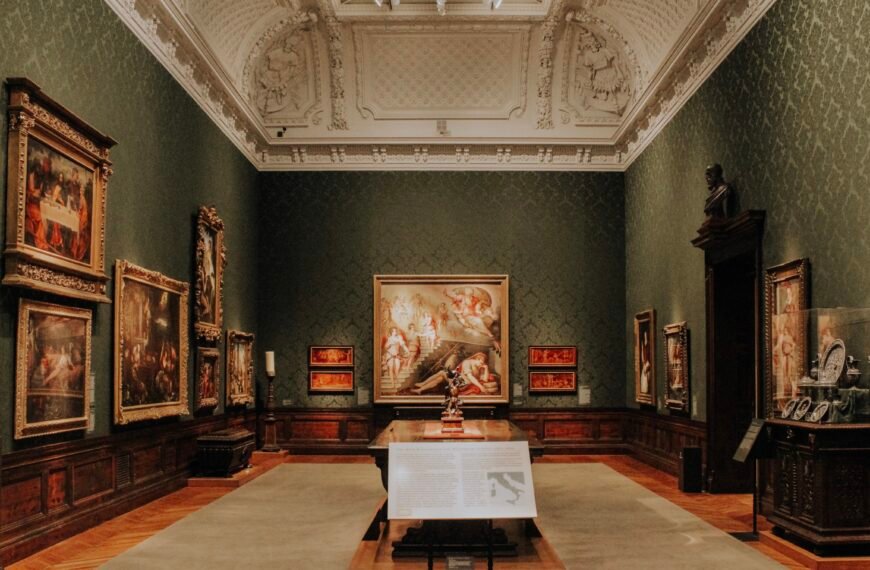Have you ever wondered which museum holds the title for being the biggest in the world? Look no further, as we unveil the answer to this intriguing question. In this article, we will explore the grandeur and vastness of the largest museum on the planet, immersing you in a world of art, culture, and history. Prepare to be amazed by the magnitude of this architectural marvel that houses countless treasures waiting to be discovered by eager visitors like yourself. Get ready for an unforgettable journey through the grand halls of the biggest museum in the world.
The Louvre

History of The Louvre
The Louvre is not only one of the largest and most famous museums in the world, but it also has a fascinating history that dates back over 800 years. Originally built as a fortress in the 12th century, it gradually transformed into a royal palace under the reign of King Louis XIV. It wasn’t until the French Revolution in the late 18th century that the Louvre was officially established as a public art museum. Since then, it has grown exponentially in both size and prestige.
Size and Layout
Covering a massive area of over 782,910 square feet, the Louvre is the largest art museum in the world. With its iconic glass pyramid entrance, the museum is spread across multiple buildings and wings, offering visitors an impressive variety of art collections. The Louvre’s layout is arranged in a series of exhibits, thematic galleries, and sections dedicated to different time periods and artistic styles. Navigating the museum can be an adventure on its own, with surprises and wonders waiting to be discovered around every corner.
Art Collections
The Louvre boasts an awe-inspiring collection of over 38,000 works of art, ranging from ancient Egyptian artifacts to Renaissance masterpieces and contemporary installations. It is home to some of the world’s most iconic artworks, including Leonardo da Vinci’s enigmatic masterpiece, the Mona Lisa, and the majestic Venus de Milo sculpture. The museum’s collections span various disciplines, including painting, sculpture, decorative arts, and archaeological artifacts, offering visitors a comprehensive journey through the history of human creativity.
Famous Artworks
The Louvre is synonymous with world-renowned artworks that have captivated millions of visitors throughout the years. Apart from the Mona Lisa and Venus de Milo, there are numerous other masterpieces worth mentioning. The Winged Victory of Samothrace, a striking Hellenistic sculpture depicting the Greek goddess Nike, is one such example. Caravaggio’s emotionally charged painting, “The Death of the Virgin,” and Jacques-Louis David’s monumental “The Coronation of Napoleon” also exemplify the artistic brilliance housed within the Louvre’s walls.

Visitor Attractions
Beyond its extraordinary art collections, the Louvre offers a range of attractions that make it a must-visit destination for art enthusiasts and casual visitors alike. The museum’s palatial architecture, with its grand courtyards and stunning domed ceilings, provides a visual feast for the eyes. The Jardin des Tuileries, a beautiful public garden adjacent to the Louvre, offers a serene escape from the bustling city, and its picturesque landscape is perfect for leisurely strolls. Additionally, the museum’s charming cafes and shops offer delightful opportunities to relax and indulge in French cuisine and culture.
Technological Innovations
In recent years, the Louvre has embraced technological innovations to enhance the visitor experience. The museum has implemented interactive audio guides and multimedia tours, which provide detailed information about the artworks and enable visitors to explore at their own pace. The Louvre also uses augmented reality and virtual reality technologies, allowing visitors to engage with the art in exciting and immersive ways. These advancements enhance accessibility and offer new avenues for understanding and appreciating the vast collection of the museum.

Notable Exhibitions
The Louvre regularly hosts a range of notable exhibitions that showcase unique artistic collaborations, special collections, and thematic displays. These exhibitions often feature works on loan from other prestigious museums, as well as rare artifacts that are not part of the museum’s permanent collection. Recent exhibitions have explored themes such as ancient civilizations, Renaissance art, and cross-cultural exchanges. These temporary exhibitions provide an additional dimension to the Louvre’s offerings, ensuring that each visit to the museum is a dynamic and enriching experience.
Fun Facts
- Did you know that the Louvre Pyramid, designed by architect I. M. Pei, is made up of 603 individual glass segments?
- The Louvre is home to the largest collection of Egyptian antiquities outside of Egypt.
- The museum is so vast that it would take approximately 100 days to see each artwork for just 30 seconds.
- The famous glass pyramid at the entrance has become an iconic symbol of the Louvre, appearing in numerous films and artworks over the years.
Controversies
Despite its esteemed reputation, the Louvre has not been immune to controversies. One notable controversy surrounds the ownership and display of artworks acquired during colonial times. Calls for repatriation and restitution of artifacts have prompted museums worldwide, including the Louvre, to revisit their acquisition policies. Another issue faced by the museum is overcrowding, particularly around popular artworks such as the Mona Lisa. Efforts have been made to mitigate this issue through crowd management strategies and the implementation of timed-entry ticketing.
Current Status
As of the time of this writing, the Louvre continues to be a thriving cultural institution, attracting millions of visitors each year. The museum continually strives to enrich its collections, enhance the visitor experience, and promote accessibility and diversity in its programming. With ongoing renovation projects and innovative initiatives, the Louvre is committed to maintaining its position as a global leader in the art world. Whether you’re a seasoned art aficionado or a curious traveler, a visit to the Louvre promises to be an unforgettable journey through human artistic achievement.








